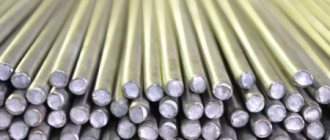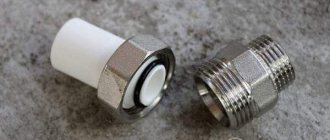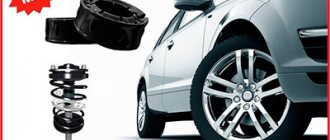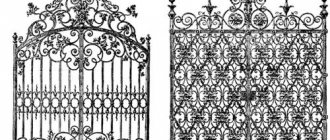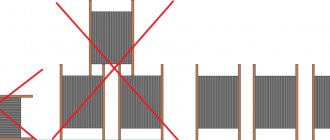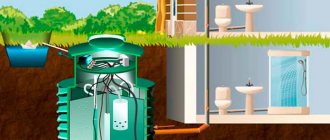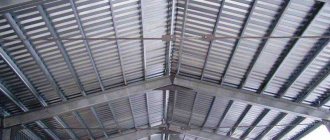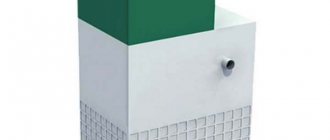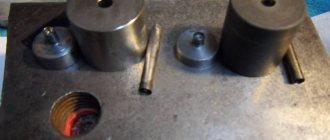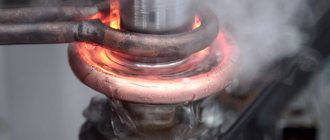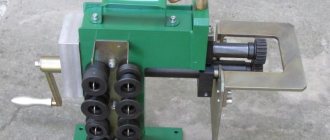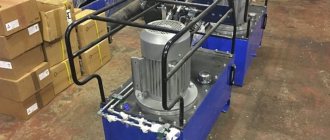Babbitt is a tin or lead based alloy that is used in plain bearings as a sprayed or potted layer to help the bearing fit tightly to the shaft. This alloy has antifriction properties, that is, it reduces friction, it wears out little during friction and protects the bearing itself from wear.
Different types of babbitt have different compositions, which determine the physical properties of the material, such as the melting point of babbitt, its density, permissible pressure and mechanical stress.
Varieties and composition
Babbitts are the general name for such antifriction materials. They can be different in composition; they include tin, lead and calcium babbit. They are characterized by permissible operating pressure, operating temperature, and operating mechanical stress. The properties of babbitts are significantly influenced by solid inclusions, the basis of which are soft metals - tin and lead.
Each additive plays its role:
- nickel - increases wear resistance;
- copper - increases hardness and toughness;
- antimony - makes the alloy more durable;
- cadmium - resists corrosion.
There are also several brands of tin babbits, including B88, B83, B83S, SAE11, SAE12, ASTM2. They are used for bearings that are subject to intense loads. Solid additives in tin alloys include antimony, cadmium, copper or nickel. Due to their high wear resistance, these babbits are the most expensive.
Lead alloys include B16, BN, BSb, BKA, BK2, BK2Sh, SAE13, SAE14, ASTM7, SAE15, ASTM15. They are softer than tin, usually composed of lead and antimony in a ratio of 87% to 13%, and have relatively low elasticity, so they are used for lightly loaded bearings used at high temperatures, for example, in diesel engines and rolling mills.
Calcium alloy is also based on lead, its feature is the addition of calcium and sodium. Alloys with calcium are used for railway bearings, which are checked and replaced relatively often, since the calcium variety does not have high wear resistance.
There are many brands of this material, differing in composition, but there are about ten main and most frequently used ones. The composition and properties of common grades influence how these alloys are used.
- B-88 - 88% tin, antimony, cadmium. This is one of the expensive types of alloy, it is used in main bearings, which must withstand heavy loads and high speeds.
- B-83 - 83% tin, 11% antimony, 6% copper, used for moderately loaded bearings, permissible pressure - 10-15 MPa, used in mechanisms operating at high speeds (more than 1000 rpm).
- B-16 - 15-17% tin, 15-17% antimony, 1.5-2% copper, the rest is lead, used in bearings of steam locomotives, electric locomotives, track machines, permissible pressure - up to 10 MPa, used for filling non-working upper parts of the bearing when the lower part is filled with B-83 babbitt.
- SOS6 - 5.5-6.5% zinc, 5.5-6.5% antimony, the rest is lead, used under heavy loads (more than 20 MPa), at temperatures above 300 C, in diesel engine bearings.
- BM - only for connecting rod bearings, which are installed, for example, on tractors. Such parts are replaced every 1000 km, but the mass of babbitt in them is small, so the part is relatively inexpensive.
- BN - for parts used at medium speeds, for example, in ship water pipes, compressors.
Advantages and disadvantages of babbitt
Considering the properties of babbitt, we will touch on its key pros and cons. The advantages of the alloy include its anti-friction qualities and excellent wearability to the part. The alloy significantly increases the service life of the bearing and its wear resistance - during operation, microchannels are formed in the babbitt layer, through which the lubricant gets to the part.
One significant disadvantage of babbitts is their low strength compared to other alloys. Because of this, such a layer is limited to a stronger cast iron, steel or bronze body.
Standards
Babbitt brands B88, B83, B83S, B16, BN and BS6 are manufactured according to the uniform GOST 1320-74. This standard specifies the chemical composition, permissible amount of impurities, size and shape of pigs, and safety requirements. According to GOST, at the request of the customer, some components can be replaced, and the shape of the ingots can also be changed.
These alloys contain metals that are harmful to humans - lead and antimony. Lead belongs to hazard class 1, antimony to class 2. Lead affects the nervous system, blood, blood vessels, antimony has an irritating effect. Therefore, work with these antifriction materials (melting, filling of bearings) must be carried out using protective equipment: dry overalls, a “Petal” respirator, felted or leather shoes, mittens. These funds also have their own GOST standards. Store the antifriction alloy in closed, ventilated areas. GOST also specifies the operating conditions for which this or that brand of Babbitt is adapted.
Calcium babbits are produced according to a different standard - GOST 1209-90. These are alloys under the brands BKA, BK2, BK2Sh and BK2Ts.
Scrap of this material must comply with GOST 1639-2009. This standard covers babbitt scrap lumps (tin varieties only), lead scrap lumps (to which printing alloy waste is added), tin babbitt shavings and mixed shavings.
Properties and criteria
Types, properties and applications of gypsum putty
The structural structure of babbitt is presented in the form of an alloy that contains lead. The main difference between babbitt pigs and products whose structure contains tin is their use at elevated temperatures. The alloy, in addition to lead, contains elements such as copper, antimony and tin. When heated to 100 degrees, the metal becomes plastic. The melting process is carried out in the range of 320°C-440°C. An acceptable operating temperature is considered to be up to 110 degrees.
In order to acquire the required qualities, alloying elements are added to the composition:
- arsenic – helps increase hardness and strength;
- nickel – provides increased wear resistance, hardness, strength and elongation;
- tellurium – increases ductility;
- cadmium – increases anti-corrosion resistance;
- magnesium - used as a modifier;
- sodium - used to increase the strength of an alloy containing soft lead by creating a solid solution of sodium in lead;
- calcium – supplemented in the form of a tin substitute.
Alloy B16 is characterized by weaker antifriction properties, and alloy B83 represents a category of high quality products. Products with insufficiently high antifriction properties (B16 alloy) should not be used during mechanical vibrations, as this can destroy the alloy and lead to the formation of defects in the product. The weight of pigs that can be purchased is no more than 22 kg.
A distinctive feature of all types of babbitts is their low fatigue resistance index, which can reduce the optionality of bearings. For this reason, the material is used on liners, the design of which provides for their installation in a housing made of ferrous metal (cast iron) or bronze. Inserts with thin walls are installed in the internal combustion engine using bimetal stamping and continuous casting. The service life of bearings is determined taking into account the size of the babbitt layer poured onto the metal base. A peculiarity is observed: the service life of the liner increases as the babbitt layer decreases.
Production
Babbitts are made from both primary materials and secondary materials, that is, melted down babbitt scrap. In our country, up to 70% of this material is made from scrap. In the latter case, it is important to thoroughly clean the scrap from dirt and impurities.
Babbitt alloy is cast into pigs - ingots of a certain shape, size and weight, which are prescribed in the standards. When using an alloy, it is important that the pigs are not contaminated. Contaminated material will have poor adhesion to the liners, which can lead to rapid wear or accidents.
How to sell for maximum profit
The cost at which babbitt scrap can be sold depends entirely on the chemical composition and concentration of the alloy.
Resellers and small bases that do not have a license and special equipment will not be able to accurately determine the amount of tin or lead in a product.
Licensed companies for the purchase and processing of metal are the best option for profitable sale of babbitts.
Spectral analysis done using professional instruments will show the exact content of a particular metal.
For the removal of large volumes of illiquid goods (usually from 200 kg), transportation services are provided. The departure of cargo vehicles can be ordered by phone, having discussed the time and details of the transaction.
Finding a metal warehouse with favorable conditions is not easy. After reading reviews about a particular company on the Internet, you can make a mistake in choosing a collection point. Often these reviews are paid by the content master and written for monetary compensation by freelancers.
You can also find buyers of non-ferrous scrap metal with favorable conditions and prices on specialized forums or on social networks, where discussion participants will suggest the most profitable option in your region.
The easiest and fastest option to find the most favorable conditions for accepting babbitt scrap is to arrange a mini-tender (if the volume is significant) or independently collect information on 5-10 collection points. That is, either send out your offer, or call the company and write out prices and terms of acceptance.
for legal entities to correctly register the write-off of production waste. The procedure necessary for this can be ordered from specialists from a company that has the rights to provide legal support when accepting waste materials.
Filling bearings with babbitt
The ability to refill the bearing shells with Babbitt is an alternative to replacing the entire bearing. This way you can save a lot. To fill or refill bearing shells with Babbitt you need:
- babbitt in pieces 1-2 kg;
- charcoal;
- hydrochloric acid;
- tin and babbit sticks for tinning;
- paste for coating loose areas of the mold,
- a crucible for melting metal of such a volume that it is possible to melt a babbitt in it to fill the liner in one go, the crucible should have a shape tapering upward, and the spout should come out of its lower part;
- form for filling the bearing;
- oven or forge (special electric ovens are available);
- water temperature 80-90 degrees.
If it is necessary to refill the bearings, the old babbitt is first melted down. This is done in special furnaces, as well as using a blowtorch or immersion in molten babbitt. The old alloy must be thoroughly cleaned and degreased.
The bearing surface should also be free of any contamination. It is also degreased and pickled for better adhesion of the antifriction material to the surface. For degreasing, use a caustic soda solution, after this operation the part is thoroughly washed. Hydrochloric acid is used for etching. As a result, small grooves appear on the surface.
After cleaning, the bearing surface is tinned, the babbitt is heated to the required temperature and poured into the bearing mold. After it hardens, the filled bearing is cleaned and adjusted.
Delivery form of tin babbits:
- Babbitts must be made of primary and secondary metals in the form of pigs weighing no more than 22 kg.
- The shape of babbitt pigs B83, B83S, B88 must correspond to that indicated in the drawing. The dimensions in the drawing are indicated for the manufacture of molds. Permissible deviations in the dimensions of the molds must correspond to the 10th accuracy class according to GOST 26645. By agreement between the manufacturer and the consumer, the production of babbitt pigs of other shapes is allowed.
- The surface of the babbitt pigs must be clean and free of slag contamination. Tarnished colors are allowed.
- When the ingots are broken, the babbitt should be homogeneous, without oxides, slag and other foreign inclusions.
Conditions for using tin babbits:
| Brand | Load characteristics | Specific pressure, p, kgf/cm2 | Peripheral speed V, m/s | Work intensity P*V, (kgf/m)/(cm2*s) | Operating temperature, degrees. C |
| B88 | Calm percussion | 200, 150 | 50 | 750 | 75 |
| B83 | Calm percussion | 150, 100 | 50 | 750, 500 | 70 |
| B83S | Calm percussion | 150, 500 | 50 | 750, 500 | 70 |
Physico-mechanical properties of tin babbits:
| Brand | Density, g/cm 3 | Brinnell hardness HB 5/62, 5/60, HB 2, 5/15, 6/60 at 20 degrees. WITH | Compressive yield strength, kgf/mm2 | Compressive strength, kgf/mm2 | Temperature of the beginning of melting, degrees. WITH | Melting point, deg. WITH | Filling temperature, degrees. WITH |
| B88 | 7,35 | 27,0-30,0 | — | — | — | 320 | 380-420 |
| B83 | 7,35 | 27,0-30,0 | 8,0-8,5 | 11,0-12,0 | 240 | 370 | 440-460 |
| B83S | 7,4 | 27,0-30,0 | — | — | 230 | 400 | 440-460 |
Among babbitts, tin ones have the best anti-friction properties. They are used for critical bearings, when the antifriction material is required to have a minimum coefficient of friction, high wear resistance and toughness. Compared to lead-based babbitts, the wear of tin babbitts is half as much. All tin babbits contain antimony and copper, and babbit B88 is additionally alloyed with cadmium and nickel. The structure of tin babbits consists of a soft base (a solution of antimony in tin) and solid particles of the chemical compound SnSb evenly distributed in it. Thus, antimony strengthens the soft base of babbitts and creates inclusions of high hardness. The addition of copper additionally increases the hardness of tin babbitts (due to the formation of solid inclusions of Cu 3 Sn and prevents segregation in density. Minor additions of cadmium and nickel do not form new components in the structure of babbitt B88, but reduce the size of the crystallites of the chemical compound. The disadvantage of tin babbitts is the high content of expensive and scarce tin.
Equipment
What equipment is used to fill bearings with babbitt? For this purpose, special sets of equipment are produced, for example, KO-2, on which bearings are manufactured by centrifugal casting.
This kit is available in several modifications:
- MPS - for filling plain bearings 8ТН.263.028 and 8ТН.263.029;
- D360 x L310 - for pouring plain bearings with an outer diameter of up to 360 mm, an inner diameter of 40 mm and a length of up to 310 mm;
- D950 x L500 - for pouring plain bearings with an outer diameter of up to 950 mm, an inner diameter of 60 mm and a length of 500 mm.
The use of special equipment allows you to pour babbitt more accurately, without overuse and defects.
For smelting babbitt from old bearing shells, special furnaces are also produced, for example, chamber furnaces of the PKN type of different sizes and power:
- PKN-0.6-2000 with a power of 100 kW,
- PKN-0.6-180 with a power of 26 kW.
The ovens are made of fire-resistant materials, and spirals of superfechral wire are used as heaters. They are equipped with a tray for installing bearing shells and a tray for draining molten babbitt.
Other types of furnaces are also used to pour the alloy into bearing shells, for example, PPN with a bottom spill valve. Crucibles with babbitt are placed in such furnaces. They are also heated by electric heaters. Such furnaces have a channel for emergency drainage and are controlled from a remote control on which operating modes are set. Ovens of the PPN type make it possible to dose babbitt into bearing shells.
Spheres and areas of application
Since babbitt has unique technical characteristics, it is actively used in industry. The scope of its application is limited to just a few areas in which it is simply irreplaceable. Let's look at the areas and applications of babbitt in more detail:
— production of bearings. Babbitt is used to form a thin layer at the base of the bearing. If the bearing is exposed to high temperatures, tin babbit is used, but if durability is a priority, lead is used. It is important to know that the thinner the layer of a given alloy, the longer the bearing life will be.
- heavy engineering. In almost all machines in the metallurgy and mining industries, it is used in pistons, bearings and other moving structures. Calcium babbit is widely used in easily replaceable parts due to its low cost.
— automotive industry. Babbitt is an essential component of diesel engines in automobiles and agricultural machinery (lead babbit is used due to its relative resistance to high temperatures). It is also used in movable trains of passenger and freight cars.
Babbitt is a material with unique properties. Throughout its one and a half century history, it has not lost its relevance and importance in mechanics to this day. This material has both advantages and disadvantages, but its correct use will ensure long and stable operation of the mechanical structure.
How to buy a quality alloy
The quality of the alloy determines how well the mechanisms in which it is used will work. Therefore, you should only buy babbitt manufactured in accordance with GOST.
The ingots must be clean, homogeneous, and must have the material grade, heat number and company trademark stamped on them. It is important that the composition of the alloy matches the purpose for which it will be used.
Don't chase a very low price. B83 alloy is sold at a price of approximately 1,300,000 rubles per 1 ton. Babbitt scrap is cheaper than primary material - 500-600 rubles per kilogram.
Babbitt B16 costs less - about 350 thousand rubles per ton. Enterprises that engage in wholesale supplies can set their own prices; they are lower than retail prices.
Melting
Babbitt melts at a certain temperature, which depends entirely on the selected chemical components and its brand. The composition determines its end use, and also affects its properties, price, and where it can be effective.
For example, grade B16 melts at temperatures from 240 to 340 degrees Celsius. But the most popular brand B83 also melts at a low temperature of about 240 degrees, but when pouring into the bearing mold it is recommended to maintain a temperature of 440 to 640 degrees.
Based on certain components in the composition of babbitt, its melting point is determined.
Babbitt B-83
Babbits (bearing alloys)
Babbits are white low-melting anti-friction alloys based on tin or lead. Used for filling bearing shells of various machines. The basic requirements for antifriction alloys are determined by the operating conditions of the bearing shell. Antifriction alloys must have high wear resistance and a low coefficient of friction between the shaft and bearing; sufficient ductility for better running-in to the shaft surface; hardness sufficient for the liner to support the shaft, but not causing severe wear of the shaft itself; have microcapillarity, i.e. ability to retain lubricants. These requirements are ensured by the heterogeneous structure of antifriction alloys, consisting of a soft base with hard inclusions evenly distributed in it. When rotating, the shaft rests on hard particles, which provide wear resistance and the ability to withstand relatively high specific pressures, and the soft base, wearing out faster, is worn in to the shaft and forms a network of channels (microrelief) that hold the lubricant.
Babbitts are the oldest (since 1839) and are still widely used anti-friction low-melting non-seize plastic heterogeneous alloys based on tin and lead with harder inclusions (copper, antimony, nickel, etc.). Used to make bearings. The plastic base (tin, lead) ensures uniform fit and running-in of the bearing to the shaft, and solid inclusions serve as direct support for it, providing little friction and wear.
Babbitt brands: B-16, B-83
Tin and lead babbits in ingots GOST 1320-74 are special low-melting bearing alloys. Their structure always contains a soft base and hard inclusions. Babbitts are tin (an alloy of tin with antimony and copper), lead (an alloy of lead with antimony, copper and tin), calcium (an alloy of lead with calcium and sodium).
Babbitts are manufactured in the form of ingots and, depending on the chemical composition, the following grades are distinguished: B-88, B-83, B-16, BN. The brands and chemical composition of babbitts are indicated in Table 3.
Babbitts are used in the production of motor-axial bearings for electric locomotives, parts of steam locomotives and heavy engineering equipment; bearings operating at high speeds and medium loads.
The chemical composition of tin and lead babbitt pigs according to GOST 1320-74 is indicated in Table 3.
table 3
| chemical composition, % | |||||||
| Babbitt brand | main components | ||||||
| tin | antimony | copper | cadmium | nickel | arsenic | lead | |
| B-88 | rest | 7.3-7.8 | 2.5-3.5 | 0.8-1.2 | 0.15-0.25 | — | — |
| B-83 | rest | 10.0-12.0 | 5.5-6.5 | — | — | — | — |
| B-16 | 15.0-17.0 | 15.0-17.0 | 1.5-2.0 | — | — | — | — |
| BN | 9.0-11.0 | 13.0-15.0 | 1.5-2.0 | 0.1-0.7 | 0.1-0.5 | 0.5-0.9 | rest |
The mass fraction of impurities in tin and lead babbitt pigs according to GOST 1320-74 is indicated in Table 4.
table 4
| impurities, no more, % | ||||||
| Babbitt brand | iron | arsenic | zinc | lead | bismuth | aluminum |
| B-88 | 0.05 | 0.05 | 0.005 | 0.10 | 0.05 | 0.005 |
| B-83 | 0.10 | 0.05 | 0.004 | 0.35 | 0.05 | 0.005 |
| B-16 | 0.08 | 0.2 | 0.07 | — | 0.10 | 0.010 |
| BN | 0.10 | — | 0.02 | — | 0.10 | 0.05 |
| Brand | Chemical composition, % | Purpose | |||
| B-83 | 10-12 | 5.5-6.5 | Rest | — | For bearings operating at high speeds and medium loads (bearings of turbines, diesel engines, propeller shafts, etc.) |
| B-16 | 15-17 | 1.5-2.0 | 15-17 | Rest | For bearings of heavy machines (motor-axial bearings of electric locomotives, track machines, etc.) |
Specifics of using babbitt
Each type of part requires its own brand of babbitt alloy:
- Connecting rod bearings (joint of the piston and crankshaft) - BM brand. Used for tractors. They require replacement with new ones every thousand kilometers.
- Main bearings use B88 babbitt, created specifically for high speeds and high dynamic loads. Therefore, this brand is successfully used for medium-speed and high-speed diesel engines.
- Bearings for ship water pipelines and compressors - a type of BN, ideal for medium loads and speeds.
- Heavy engineering - the properties of grade B16 babbitt are perfect.
